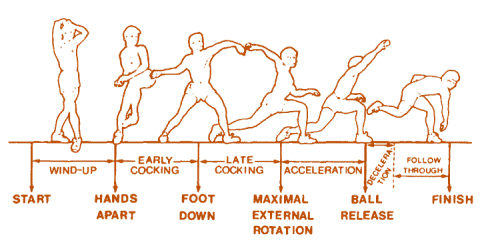Have Elbow Pain? Check Your Shoulder…
Baseball elbow check shoulder makes perfect sense to someone who understands biomechanics. But to traditional American medicine, biomechanics is like an impossible to solve Rubik’s cube. The title of our Orthopedics 2.0 book is based on the concept that for physicians to truly understand orthopedic injuries, they have to throw out many of the old assumptions and adopt a new way of thinking about patients. The focus needs to change from surgical quick fixes to a wider of understanding of why patients get injured or why certain parts are wearing out. A recent study only further shows that the research community is starting to figure this out as well. For decades baseball pitchers with elbow injuries (usually the collateral ligaments) have been treated with LASER like focus on the elbow, usually told they needed surgery to “fix” the elbow Now yet another study gets published showing that pitchers and other baseball players with elbow problems (ulnar collateral ligament injuries) really have one thing in common-poor range of motion in the shoulder! If you could count the number of pitchers nationally who show up to a doctor with elbow pain and get their shoulder examined, you would never run out of fingers and toes. Does this make common sense? Throwing athletes need their shoulder to wind up and store energy that is released through the rest of the arm during a throw. If you lose shoulder range of motion, you can’t store as much energy in the shoulder and you have to get it someplace. As result, you’ll cheat by whipping your arm as you throw to get more energy. All of that whipping hurts the ulnar collateral, which takes the brunt of that force. The upshot? If you have pain in one joint and only that joint gets examined…you may want to find another doctor.

NOTE: This blog post provides general information to help the reader better understand regenerative medicine, musculoskeletal health, and related subjects. All content provided in this blog, website, or any linked materials, including text, graphics, images, patient profiles, outcomes, and information, are not intended and should not be considered or used as a substitute for medical advice, diagnosis, or treatment. Please always consult with a professional and certified healthcare provider to discuss if a treatment is right for you.

